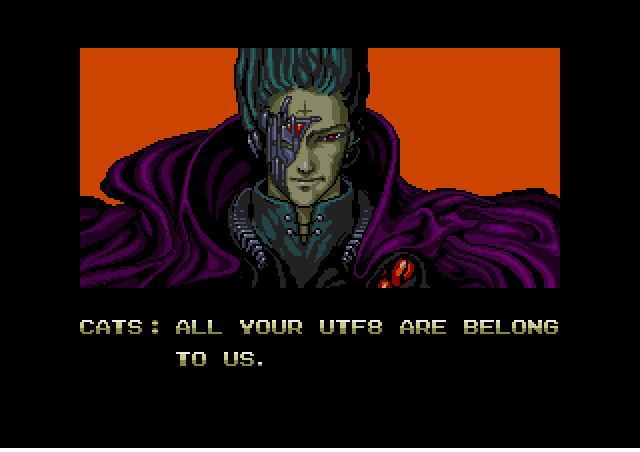86 lines
4.4 KiB
Markdown
86 lines
4.4 KiB
Markdown
# Zero-EPWING #
|
||
|
||
Zero-EPWING is a tool built to export easy to process JSON formatted UTF-8 data from dictionaries in
|
||
[EPWING](https://ja.wikipedia.org/wiki/EPWING) format. This is a terrible format for many reasons, some of which are
|
||
outlined below:
|
||
|
||
* It is based on a closed and undocumented standard.
|
||
* Not well supported as it isn't used anywhere else in the world.
|
||
* The only library for parsing this format, `libeb`, is abandoned.
|
||
* Data is stored in an inconsistent manner, with lots of duplication.
|
||
* Text data is represented using the annoying EUC-JP encoding.
|
||
* Characters which cannot be encoded are represented by image bitmaps.
|
||
|
||
Most applications that parse EPWING data traditionally use `libeb` to perform dictionary searches in place; dealing with
|
||
quirks in the format and `libeb` output is just part of the process. Zero-EPWING takes a different approach -- extract
|
||
all the data and output it an sane intermediate format, like JSON. As everyone knows how to parse JSON, it is trivial to
|
||
take this intermediate data and store it in a reasonable, industry standard representation.
|
||
|
||

|
||
|
||
## Requirements ##
|
||
|
||
* [Autotools](https://www.gnu.org/software/automake/manual/html_node/Autotools-Introduction.html)
|
||
* [CMake](https://cmake.org/)
|
||
* [GCC](https://gcc.gnu.org/)
|
||
* [Make](https://www.gnu.org/software/make/)
|
||
* [MinGW](http://www.mingw.org/) (Windows only)
|
||
|
||
## Building ##
|
||
|
||
The instructions below are for building on Linux, Mac OS X, and Windows, provided your environment is already configured
|
||
for development:
|
||
|
||
1. Clone the `https://github.com/FooSoft/zero-epwing` repository.
|
||
2. Initialize (`git submodule init`) and update (`git submodule update`) the project submodules.
|
||
3. Switch to the `eb` directory and execute `./configure --disable-shared --disable-ebnet --disable-nls`.
|
||
4. While still in the `eb` directory, build the modified library by executing `make`.
|
||
5. Switch to the `jansson` directory then execute `cmake .` and `make`.
|
||
6. From the project root directory, execute `cmake .` and `make`.
|
||
|
||
## Usage ##
|
||
|
||
Zero-EPWING takes a single parameter, the directory of the EPWING dictionary to dump. It also supports the following
|
||
optional flags:
|
||
|
||
* `--pretty` (`-p`): output pretty-printed JSON (useful for debugging).
|
||
* `--markup` (`-m`): markup the output with as much metadata as possible.
|
||
* `--positions` (`-s`): output *page* and *offset* data for each entry.
|
||
|
||
Upon loading and processing the provided EPWING data, Zero-EPWING will output a UTF-8 encoded JSON file to `stdout`.
|
||
Information about errors will be printed to `stderr`; serious errors will result in this application returning a
|
||
non-zero exit code. A sample of the JSON data output is pretty-printed below for reference:
|
||
|
||
```
|
||
{
|
||
"charCode": "jisx0208",
|
||
"discCode": "epwing",
|
||
"subbooks": [
|
||
{
|
||
"title": "大辞泉",
|
||
"copyright": "CD-ROM版大辞泉 1997年4月10日 第1版発行\n\n監 修 松村 明\n発行者 鈴木俊彦\n発行所...
|
||
"entries": [
|
||
{
|
||
"heading": "亜",
|
||
"text": "亜\n[音]ア\n[訓]つ‐ぐ\n[部首]二\n[総画数]7\n[コード]区点...
|
||
},
|
||
{
|
||
"heading": "あ",
|
||
"text": "あ\n{{w_50275}}\n{{w_50035}}五十音図ア行の第一音。五母音の一。後舌の開母音...
|
||
},
|
||
...
|
||
```
|
||
|
||
You may have noticed the unusual-looking double curly bracket markers (such as `{{w_50035}}`). Remember what I mentioned
|
||
about certain characters being represented by image files? There are two graphical fonts in each dictionary, narrow and
|
||
wide. Whenever a character cannot be encoded as text, a glyph is used in its place. These font indices cannot be
|
||
converted directly to characters, differ from one dictionary to another, and short of performing OCR, you must build
|
||
tables to map these font indices to Unicode characters yourself. Zero-EWPING has no means to map these font glyphs to
|
||
Unicode by itself, and instead places inline markers in the form of `{{w_xxxx}}` and `{{n_xxxx}}` in the output,
|
||
specifying the referenced indices of the wide or narrow fonts respectively. The font glyphs can be dumped with the
|
||
`ebfont` sample application distributed with `libeb`, making the creation of these mappings tedious but possible.
|
||
|
||
## License ##
|
||
|
||
MIT
|